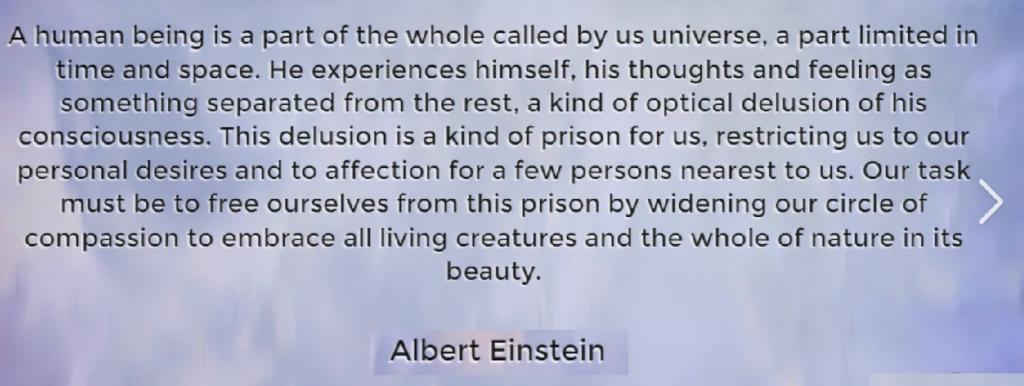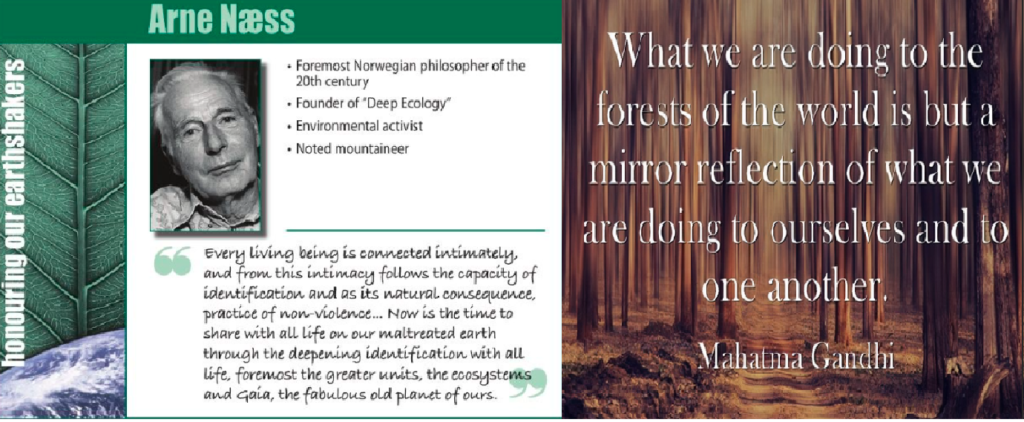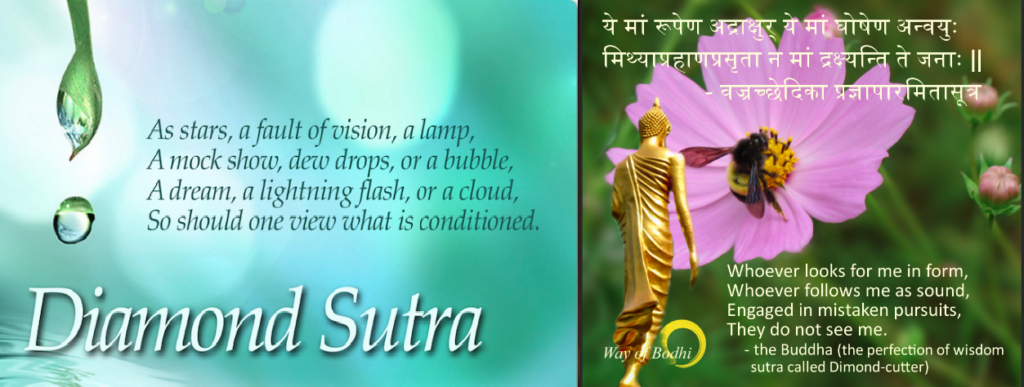南无本师释迦牟尼佛(三称) Namo Fudnamental Teacher Shakyamuni Buddha !(three times)
南无大愿地藏王菩萨(三称) Namo Ksitigarbha Bodhisattva! (three times)

Chapter 11: The Earth Spirit Protects the Dharma (地神护法品) English sound recording with captions, Online Chinese Earth Store Sutra text; English Earth Store Sutra text; A Commentary by Master Hsuan Hua at City of Ten Thousand Buddhas;
A series of earthquakes rattled Taiwan in September with the highest one at 6.8 magnitude hit Taiwan on September 18 2022, according to the island’s weather bureau. Are these earthquakes just independent nature occurrences or these are the resonate of the human emotional turmoil triggered by the extreme disturbing political conflict of the region?
Human beings throughout history knew of their interconnectedness with nature as they were deeply immersed in the natural world. It is only in the last few centuries that humans have separated themselves from nature, both physically and psychologically. Most of us now operate under the unconscious assumption that what we call “the self” is something that exists independent of the world around us. We feel that we exist “in here” somewhere in our bodies, and that the world is something which exists “out there.”
This perception, though held by most people living today, is not actually an accurate representation of who we are (after we study Buddhism or eastern ancient philosophy). We do not and cannot exist independent of our environment. You are made of the food you eat, the air you breathe, the water you drink, the sun that heats you and the planet, and so many other elements. When we think of ourselves as self, and other things in nature as not-self, we create a duality or separation that does not exist in reality. The tree, the sky, the sun—these are all not-self in terms of our notion of self. Without these elements, however, we could not exist. It is only because of not-self elements that what we call the self exists at all.

Yet, we do not tend to feel this on a visceral level. This illusory perception caused many of us often suffer deeply because we perceive ourselves to be disconnected and alienated from the rest of the world. This disconnect not only make us feel quite alone in this world, we often feel justified in judging, mistreating, and abusing other human beings and living creatures. we do not intuitively realize the harm we do to neglect Nature, to manipulate it, pollute it until the issue became so serious. If we continue to operate under the false notion of being a separate self, we will continue to act according to that notion, and our planet, and ourselves, will continue to suffer because of it. We need to awaken from this illusion and realize that we are not a separate self, but that we are one with the whole of nature.
Norweign philosopher Arne Naess is one of the first in the West to raise the proposition that humans can become part of the ecosystems of Earth, in distinction to becoming only themselves. Næss believed that the environmental crisis of the twentieth century had arisen due to certain unspoken philosophical presuppositions and attitudes within modern western developed societies which remained unacknowledged.

While Naess coined the term “deep ecology” and sparked a new movement along with it, this idea of seeing human beings as interconnected parts of nature is not by any means a new philosophy. In fact, it is quite ancient. We can find perhaps the oldest written document on deep ecology (though it wasn’t given this name at the time) in the ancient text of the Diamond Sutra. The Diamond Sutra is a primary text in the Mahayana Buddhist tradition (which includes the Ch’an or Zen school). Buddhism, among all world traditions, has focused most intently on questioning this notion of “self,” and no Buddhist text is more known for this than the Diamond Sutra.

In the Earth Store Sutra, there had mentioned many times of other lands and the saha world, beings in other realms, like the sea spirits, river spirits, stream spirits, tree spirits , mountain spirits, earth spirits, brook-and-marsh spirits, space spirits etc. As we read lines like these, people may have questions about how come the submarines in the deep water or spaceships to the moon do not discover such beings described in the sutra?
In broad strokes, lots of scientific theories are fairly harmonious with Buddhism, science is gradually catching up with Buddhism, especially in the last 100 years. Buddhist cosmology is not humancentric, earth is just a dustmote among infinite galaxies here too, universes arise and cease after billions of years. The broad lines mesh well there. Obviously, Buddhist cosmology does not match well to scrutiny under a fine-toothed combed, although that can also be said of scientific theories from 20 years ago. Buddhist estimates for the number of atoms in the universe exceed current scientific estimates by thousands of orders of magnitude.
Buddhism even has a theory of evolution. Though it’s maxim is more of a “species evolve and devolve according to their collective karmic virtue” than “survival of the fittest”, so that doesn’t gel too well with modern science. Actually, Buddhist theory of evolution is a bit more expansive than just evolution, since it is simultaneously a theory of ecology – the environment also responds to all this. For example, in Buddhist cosmology, it is described how in the early stages of this world, ethereal gods populated the world. But they eventually grew too greedy and not only devolved into lesser more corporeal beings themselves, the planetary environment changed as a result of their greed as well.
A popular subject physicists have been looking into in recent years includes parallel universes and other dimensions. These parallel universes and dimensions are described as other realms which can include other life forms beyond our universe and other dimensions right here on earth. These ideas are part of superstring theories and M-theory. These theories of modern physics are one-hundred percent compatible with the Dhamma and the 31 planes of existence. The planes of existence include realms that are beyond our imagination in distance and realms that are right here on earth. The other dimensions include what are known as “invisible beings” in the Buddhist cosmology. They are invisible because they are in a different dimension.
Everything, including all of the dimensions are inter-connected. The Buddha said: “As a net is made up of a series of ties, so everything in this world is connected by a series of ties. If anyone thinks that the mesh of a net is an independent, isolated thing, he is mistaken. It is called a net because it is made up of a series of interconnected meshes, and each mesh has its place and responsibility in relation to the other meshes.” (Gach, 2002) In this quote we can see the talk of dimensions and parallel universes with the emphasis on the meshes and its relation to other meshes. The Buddha also made it clear that there is no permanent self-essence in anything in the universe and that nothing is independent. Modern scientists have concurred with these ideas. The language might be a little different, but the concepts and observations are the same.
The zen master, D. T. Suzuki, described emptiness as follows, “By emptiness of self-aspect or self-character, therefore, is meant that each particular object has no permanent and irreducible characteristics to be known as its own.” Modern physicist, David Bohm, repeats almost the same thing in scientific language with, “Quantum theory requires us to give up the idea that the electron, or any other object has, by itself, any intrinsic properties at all.” Einstein discussed space as follows, “According to general relativity, the concept of space detached from any physical content does not exist.” Compare these well learned people above to the words of Buddha, nearly 2,600 years ago: “If there is only empty space, with no suns nor planets in it, then space loses its substantiality.” 不同维次的空间,就如电视的不同频道;许许多多的鬼神也跟我们不同空间.
to be continued ……
Dedicate Merits:
May the precious bodhicitta That has not yet arisen, arise and grow, And may that which has already arisen not diminish, But increase more and more. 回向偈: 愿以此功德,庄严佛净土。 上报四重恩,下济三涂苦。 若有见闻者,悉发菩提心。 尽此一报身,同生极乐国。